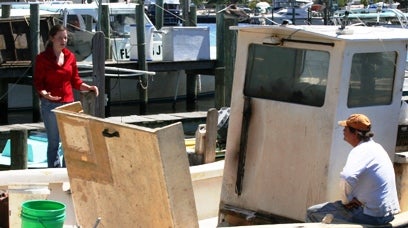The past few weeks have been big for Southeast fisheries.
- Two weeks ago, the National Marine Fisheries Service passed an interim rule that will close red snapper fishing for 180 days starting Jan 4;
- Last week, the South Atlantic Fishery Management Council met in Atlantic Beach, North Carolina and approved measures (Amendment 17B) to end overfishing for nine species of snapper and grouper fish; and
- Last week, the National Oceanic and Atmospheric Administration released its catch share policy, which will hopefully increase consideration of catch shares for our declining snapper-grouper fishery.
 With all this going on, it is no wonder that last week’s Council meeting focused on red snapper.
With all this going on, it is no wonder that last week’s Council meeting focused on red snapper.
Red snapper in the Southeast is said to have been overfished since the 1960s, but its cultural and economic value and lack of consensus on data are all reasons why the Council has yet to institute a rebuilding plan. But according to fishery laws, the Council must end overfishing of red snapper and other species. This has prompted a very close look at how to end overfishing of red snapper in a way that keeps as many fishermen on the water as possible.
Currently the Council is considering large area closures to end overfishing, but is still seeking new information – like red snapper mortality rates – that might further decrease the need for large closures. The pursuit of this new information is likely to lead to delays in implementation of regulations to end red snapper overfishing, which is one reason the National Marine Fisheries Service took action to implement a red snapper interim rule.
A huge amount of responsibility is put in the hands of Council members. If regulations are too stringent, more fishermen will go out of business. If regulations are too weak and do not end overfishing, the fishery will likely see future regulations that are even stricter and more devastating.
Over the last year, I have heard impassioned pleas from commercial and for-hire fishermen and their families for the Council to consider how new regulations will impact their businesses and families. This is an important concern and the Council is clearly considering business impacts in its deliberations on new regulations.
There is no magic answer for red snapper and other fish in trouble because all solutions will impact fishermen – commercial and recreational alike. However, a catch share for red snapper and other snapper and grouper species will help keep fishermen on the water and fishermen’s profits up. Plus, the Council can now look for technical, analytical, research and public outreach help from NOAA, via the agency’s new catch share policy, to help make this opportunity a reality.
As the Council makes a decision on red snapper and starts hearing more about how the early fishing season closures on vermillion, black sea bass, and other fish are negatively effecting individual profitability and the price of fish, I encourage them to consider a catch share to address accountability, improve data, and maintain a profitable fishery.










 Southeast fishermen recently finished the first month of closures on many popular fish. Many fisheries won’t open again for several months and reality is sinking in across the region.
Southeast fishermen recently finished the first month of closures on many popular fish. Many fisheries won’t open again for several months and reality is sinking in across the region.
![Loggerhead close up over aqua_2792097[1]_shutterstock_RF Loggerhead close up over aqua_2792097[1]_shutterstock_RF](https://blogs.edf.org/edfish/wp-content/blogs.dir/18/files/2010/01/Loggerhead-close-up-over-aqua_27920971_shutterstock_RF-300x186.jpg) The
The